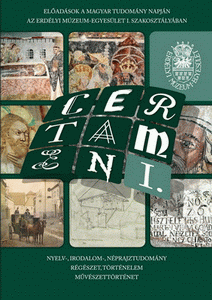Marosvásárhely első említése
The First Written Mention of Târgu Mureş (Marosvásárhely/Neumarkt)
Author(s): Géza HegyiSubject(s): History
Published by: Erdélyi Múzeum-Egyesület
Keywords: Târgu Mureş; damus pro memoria; Martonos Pelejtei (de Plechotice); king’s stay in Transylvania; Amadé Aba; dating charters
Summary/Abstract: The paper offers a short analysis of a judicial document issued in Foro Siculorum. Although the issuer and the year of issuing are not mentioned, the document was dated around 1300, therefore it was considered the first written mention of Târgu Mureş (also called Forum Siculorum or Novum Forum Siculorum in the 14th century sources). Yet, some historians (Elek Benkő, Sándor Pál-Antal) rejected this idea, pointing out that the litigants were living in the distant upper parts of medieval Hungary (nowadays Eastern Slovakia). Nevertheless, the author considers that these facts do not refute the identification of the issuing place with Târgu Mureş. On one hand, there is no other place in medieval Hungarian Kingdom called Forum Siculorum (although in the Arpadian Age the Szeklers, besides Transylvania, can be found in many other parts of the realm as well); on the other hand, a charter issued in Transylvania could refer to parts of Hungary that are at a considerable distance from the issuing place (such examples linked to Târgu Mureş are known from 1344 and 1370). These cases generally occurred during the kings’ visits to the eastern province. In our understanding, the protagonists of the above-mentioned litigation – together with their overlord, palatine Amadé from the Aba clan –, accompanied the king to Transylvania, and profited of the opportunity to ask for his intervention in order to solve their conflict. This speculation helps us to define even the precise date of the document: only the itinerary of King Andrew III from 1291 allows a royal presence on 9th of February in Târgu Mureş. This solution is even supported by an inedited document from 1291, which testifies the presence of Amadé during this royal visit. Thus the issuer of the document should be considered either Amadé or the king. (Another date linked to the excursion of King Ladislau IV the Cuman in Transylvania from 1280, when Amadé was comes of Sibiu, could also be considered, however it is less likely.)
Journal: Certamen
- Issue Year: 2013
- Issue No: I
- Page Range: 175-190
- Page Count: 16
- Language: Hungarian

